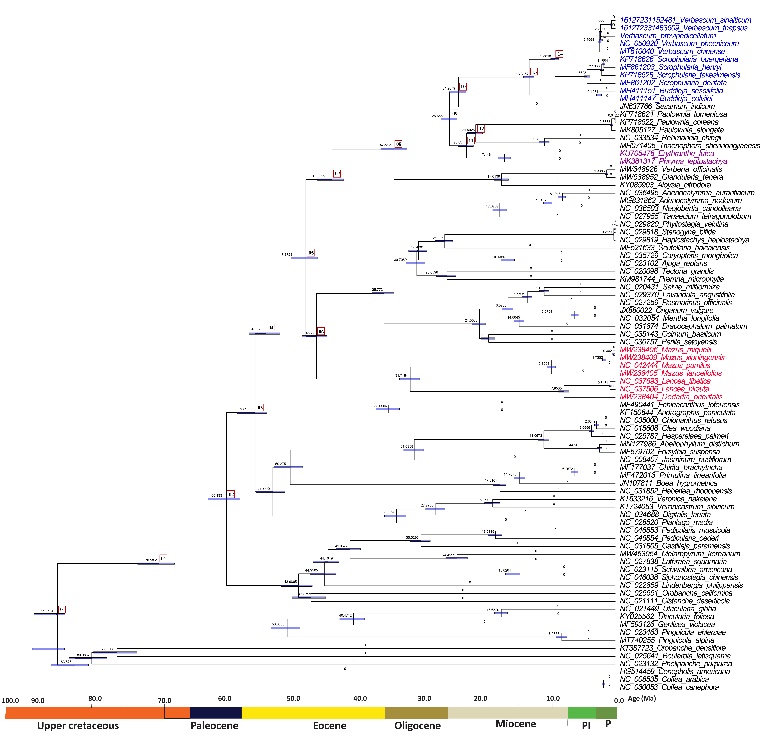Name:HU Guangwan
Tell:
Email:guangwanhu@wbgcas.cn
Organization:Wuhan Botanical Garden
Research Untangles the Evolutionary History of Mullein Species from China and Kenya
2022-10-20
The genus Verbascum (Scrophulariaceae, Lamiales), commonly recognized as “Mullein”, comprises about 360 species that are widely distributed in temperate regions in Europe, Africa, and Asia. The generic circumscriptions and placement of the genus Verbascum is a challenge, and this has been the focus of contentious debate among the researchers. The genus Verbascum is still poorly understood, and new species are described regularly. The taxonomy of Verbascum has been a source of contention, and it varies depending on the treatment.
To understand the evolutionary relations of Verbascum species and other species in order Lamiales. Flora and Plant Taxonomy in Eastern Africa Research Group of Wuhan Botanical Garden analyzed the complete chloroplast (cp) genomes of the eight samples of Verbascum.
The complete plastomes of the seven species were typical circular double-stranded structures and ranged from 153,014 bp in V. blattaria to 153,291 bp in V. chaixii. All plastomes encoded 114 unique genes, comprising 80 protein-coding genes, 30 tRNA genes (Transfer RNAs genes), and four rRNA genes (Ribosomal RNA genes). Although the plastid genome structure of Verbascum is generally conserved and stable, a total of 348 SSR loci were still detected in seven species, and these regions were expected to be developed as important molecular markers for Lamiales. Based on the phylogenetic results, the species status of V. brevipedicellatum (Engl.) Hub.-Mor was reinstated.
In addition, this study suggested the reinstatement of the families Phyramaceae and Mazaceae because they formed separate clades with high bootstrap support values. Notably, their divergence period was also different. Mazaceae diverged early compared to Phyramaceae species. The research enlightens the relationship of various families as well as the divergence time estimate in order Lamiales.
The research entitled “Taxonomy, Comparative Genomics of Mullein (Verbascum, Scrophulariaceae), with implications for the evolution of Verbascum and Lamiales” was published in the journal of BMC Genomics. This work was supported by the National Natural Science Foundation of China and Sino-Africa Joint Research Center, CAS.
DONG Xiang together with two Kenyan students Elijah Mbandi Mkala and Elizabeth Syowai Mutinda are the first authors. Professor HU Guangwan is the corresponding author. Several students from the group participated in the study.

The complete chloroplast plastomes circular map of the Verbascum (Image by WBG)

Phylogenetic tree construction of 38 taxa using maximum likelihood (ML) in nrDNA (ITS 1 + 5.8S + ITS2) (Image by WBG)

Phylogenetic tree construction of 89 taxa using maximum likelihood (ML) and Bayesian inference (Bl) methods using 80 protein-coding genes (Image by WBG)

Phylogenetic chronogram showing the evolutionary dating time of order Lamiales using 86 taxa (Image by WBG)